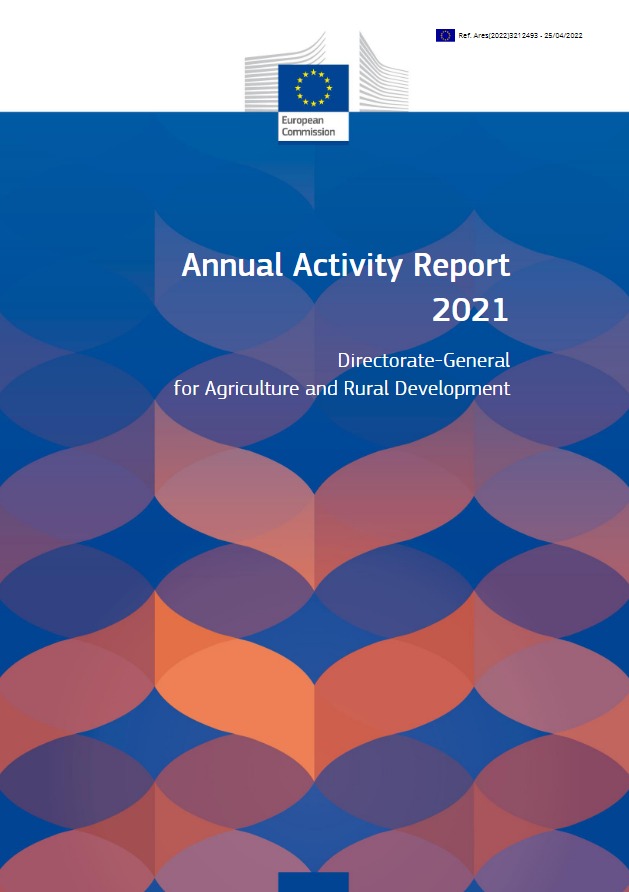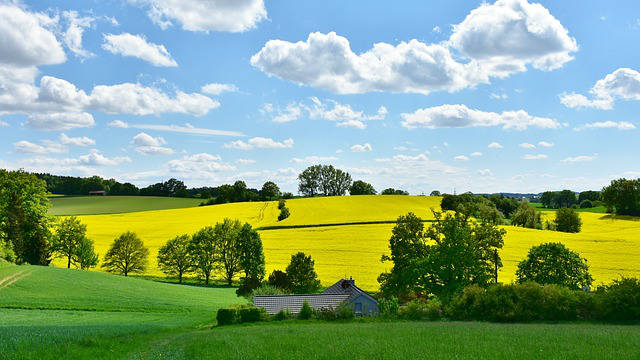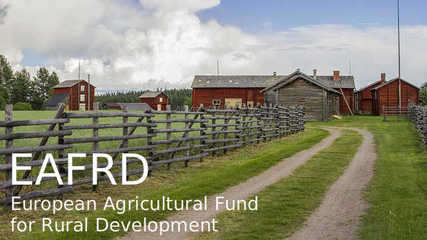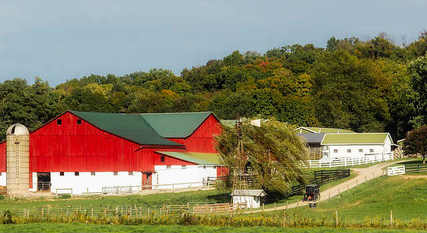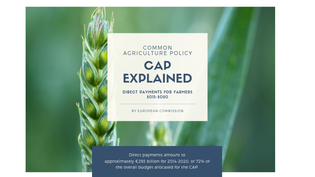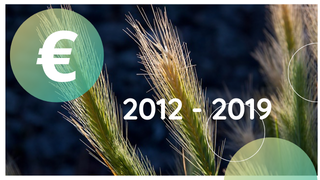|
Brussels, |
|
€386,6 billion (2021-2027)
The Common Agriculture Policy (CAP) is financed by EU annual budget. The EU decides a multiannual financial framework and the current one is referring to the period 2021-2017, adopted on 17 December 2020. The total amount for all EU policies is €1.12 trillion, plus €808 billion from the Next Generation EU recovery instrument.
A transitional Regulation 2021-2022 ensures continued support for agriculture, forestry and rural areas until the planned introduction of CAP strategic plans in 2023. During these 2 years, funding will be drawn from the CAP’s budget allocation for 2021-27, bolstered by an additional €8 billion from the NextGenerationEU Recovery Instrument (EURI) assigned to the European agricultural fund for rural development (EAFRD). The transitional period should provide EU countries with sufficient time to design and prepare for the implementation of their respective CAP strategic plans, with the assistance of the Commission.
All CAP financial measures
1. European agricultural guarantee fund (EAGF)
Financial allocation: €291.3 billion (up to €270 billion will be provided for income support schemes) (1)
Period: 7 years (2021-2027)
it includes direct payments to farmers, to ensure income stability, and remunerates farmers for environmentally friendly farming and delivering public services not normally paid for by the markets, such as taking care of the countryside.
Farmers generally receive income support based on their farm’s size in hectares.
All EU countries have to offer a basic payment, a payment for sustainable farming methods ('greening') and a payment for young farmers. As it is compulsory for EU countries to provide these payments, they are often referred to as obligatory payments.
Financial allocation: €291.3 billion (up to €270 billion will be provided for income support schemes) (1)
Period: 7 years (2021-2027)
it includes direct payments to farmers, to ensure income stability, and remunerates farmers for environmentally friendly farming and delivering public services not normally paid for by the markets, such as taking care of the countryside.
Farmers generally receive income support based on their farm’s size in hectares.
All EU countries have to offer a basic payment, a payment for sustainable farming methods ('greening') and a payment for young farmers. As it is compulsory for EU countries to provide these payments, they are often referred to as obligatory payments.
|
Additionally, EU countries can choose to offer other payments that focus on specific sectors or types of farming. There are specific schemes designed to help small and medium sized farms, young farmers, farmers who operate in areas of natural constraint and/or sectors undergoing difficulties.
(1) On 20 May 2022 the EU authorized an exceptional measure funded by the European Agricultural Fund for Rural Development (EAFRD) to allow Member States to pay a one-off lump sum to farmers and agri-food businesses affected by significant increases in input costs. Such increases in prices, notably for energy, fertiliser and animal feed, are disrupting the agricultural sector and rural communities, leading to liquidity and cash flow problems for farmers and small rural businesses active in processing, marketing or development of agricultural products. This represents an additional potential budget of €1.4 billion. which is added to 291.3 billion of EAGF. 2. Rural development Fund (EAFRD)
|
Financial allocation: €95.5 billion
Period: 7 years (2021-2027)
Rural development is the "second pillar" of the common agricultural policy (CAP), reinforcing the 'first pillar' of income supports and market measures. Its fund complements national projects focusing on strengthening the social, environmental and economic sustainability of rural areas. This support is offered with national and regional programmes to address the specific needs and challenges facing rural areas.
For the EAFRD (the CAP’s “second pillar”), the total allocation amounts to €95.5 billion. This includes €8.1 billion from the next generation EU recovery instrument to help address the challenges posed by the COVID-19 pandemic. Around 30% of the recovery funds will become available in 2021, with the remaining 70% to be released in 2022.
3. Market measures
Market measures are EU interventions to regulate and support the marketing of agricultural products:
Period: 7 years (2021-2027)
Rural development is the "second pillar" of the common agricultural policy (CAP), reinforcing the 'first pillar' of income supports and market measures. Its fund complements national projects focusing on strengthening the social, environmental and economic sustainability of rural areas. This support is offered with national and regional programmes to address the specific needs and challenges facing rural areas.
For the EAFRD (the CAP’s “second pillar”), the total allocation amounts to €95.5 billion. This includes €8.1 billion from the next generation EU recovery instrument to help address the challenges posed by the COVID-19 pandemic. Around 30% of the recovery funds will become available in 2021, with the remaining 70% to be released in 2022.
3. Market measures
Market measures are EU interventions to regulate and support the marketing of agricultural products:
- Import and export tariff quotas in the EU
- Fruit, vegetable and milk distribution schemes. They finance shemes to provide millions of children, from nursery to secondary school, across Europe. For the period 2017-2023, the EU funds this operation with €250 million per year.
- Support outermost regions and small Aegean islands.
- Interventions for difficult market situations such as a sudden drop in demand due to a health scare, or a fall in prices as a result of a temporary oversupply on the market.
Income support to farmers - Rules & procedures
|
EAFG - European Agricultural Guarantee Fund
These are annual funds for direct payments to farmers. Per eligible hectare: 267€ (average) Appropriation for 2018: 43.19 bn€ (40.00 bn€ in 2017) |
Support to Rural Development - National Plans
|
EAFRD - European Agricultural Fund for Rural Development
It finances the EU's contribution to rural development programs. Appropriation 2018: 14.3bn€ |
Beneficiaries of EAGF & EAFRD
|
Here is the list of beneficiaries of European funds for agriculture throughout Europe
|
Special Aid to Young Farmers
|
Here, in particular, all the information on how the EU helps young farmers.
|
Grants for information campaigns on EU & Agriculture
|
Check the EU grants available today and read who has already received the funding.
|
Source: European Union, http://www.europa.eu/, 1998-2024
|
Brussels - Milano - Nice - Tokyo
|
eEuropa Belgium
Avenue Louise, 367 1050 Brussels BELGIUM Bld. Franck Pilatte, 19 bis
06300 Nice FRANCE YONO HOUSE 9-1 KAMIOCHIAI, SAITAMA-SHI, SAITAMA-KEN 〒 338-0001 JAPAN Via S. Veniero 6 20148 Milano ITALY |
All rights reserved - © Copyright eEuropa Belgium 2020-2024


